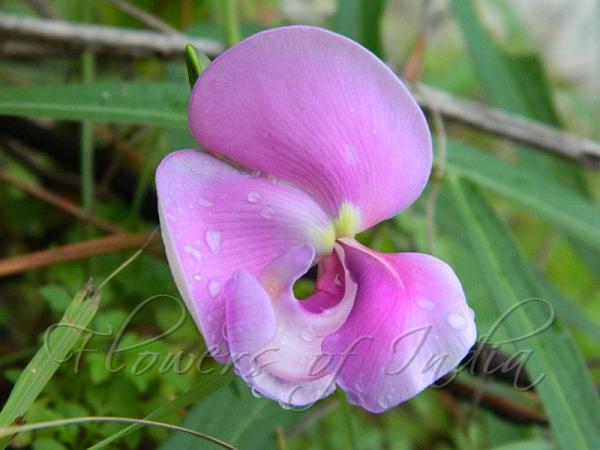|
| Narrow-Leaved Zombi Pea |
|

|

| File size | 94489 |
| Original date | 7/23/11 1:29 PM |
| Resolution | 800 x 600 |
| Flash | Flash did not fire, auto |
| Focal length | 18.6mm |
| Exposure time | 1/40s |
| Aperture | 4.5 |
| Focus Distance | |
| Metering Mode | Multi-segment |
| Camera make | NIKON |
| Camera model | COOLPIX L120 |
| Sensor type |
|
|
|
|
Photo: |
Botanical name: Vigna vexillata var. angustifolia Family: Fabaceae (Pea family)
Synonyms: Vigna angustifolia, Plectrotropis angustifolia, Vigna vexillata var. linearis
Synonyms: Vigna angustifolia, Plectrotropis angustifolia, Vigna vexillata var. linearis
Zombi pea is a fairly strong twiner, stems usually
clothed with spreading silky hairs. It resembles a plant somewhere
between a Southern pea and a mung bean. This variety is distinguished
by the less hairy leaves with longer and much narrower, lanceolate
leaflets, up to 12 × 1.5 cm. Pods and seeds resemble mung beans, and
the roots are nodulated. Flowers pink or purplish, turning yellow,
pea-like, 2.5 cm long. Because of its tuberous roots rather than its
pods, the wild mung is held in fairly high esteem in some parts of the
world. In Africa, the roots are eaten in times of severe hunger. It
grows wild in the Himalayas and in the foothills of India. The tubers
are soft, easy to peel, and possess a creamy, white, tasty interior.
They are eaten boiled or raw. Protein content of the tubers is near the
15% level, which is high compared to the 1-7% for potatoes and yams.
Medicinal uses:  The whole plant is used in Ayurvedic medicine. Mudgaparni’s initial
action is important for the formation of the first tissue that sustains
the other tissues. It is effective for joint disorders, arthritis,
swellings in joints. As a hemostatic it checks hemorrhaging thus
prolongs life in individuals suffering from internal bleeding while
building their strength with its nutritive action.
The whole plant is used in Ayurvedic medicine. Mudgaparni’s initial
action is important for the formation of the first tissue that sustains
the other tissues. It is effective for joint disorders, arthritis,
swellings in joints. As a hemostatic it checks hemorrhaging thus
prolongs life in individuals suffering from internal bleeding while
building their strength with its nutritive action.
 The whole plant is used in Ayurvedic medicine. Mudgaparni’s initial
action is important for the formation of the first tissue that sustains
the other tissues. It is effective for joint disorders, arthritis,
swellings in joints. As a hemostatic it checks hemorrhaging thus
prolongs life in individuals suffering from internal bleeding while
building their strength with its nutritive action.
The whole plant is used in Ayurvedic medicine. Mudgaparni’s initial
action is important for the formation of the first tissue that sustains
the other tissues. It is effective for joint disorders, arthritis,
swellings in joints. As a hemostatic it checks hemorrhaging thus
prolongs life in individuals suffering from internal bleeding while
building their strength with its nutritive action. Identification credit: Alok Mahendroo
| Photographed in Kalatope-Khajjiar Wildlife Sanctuary, Chamba, Himachal Pradesh. |